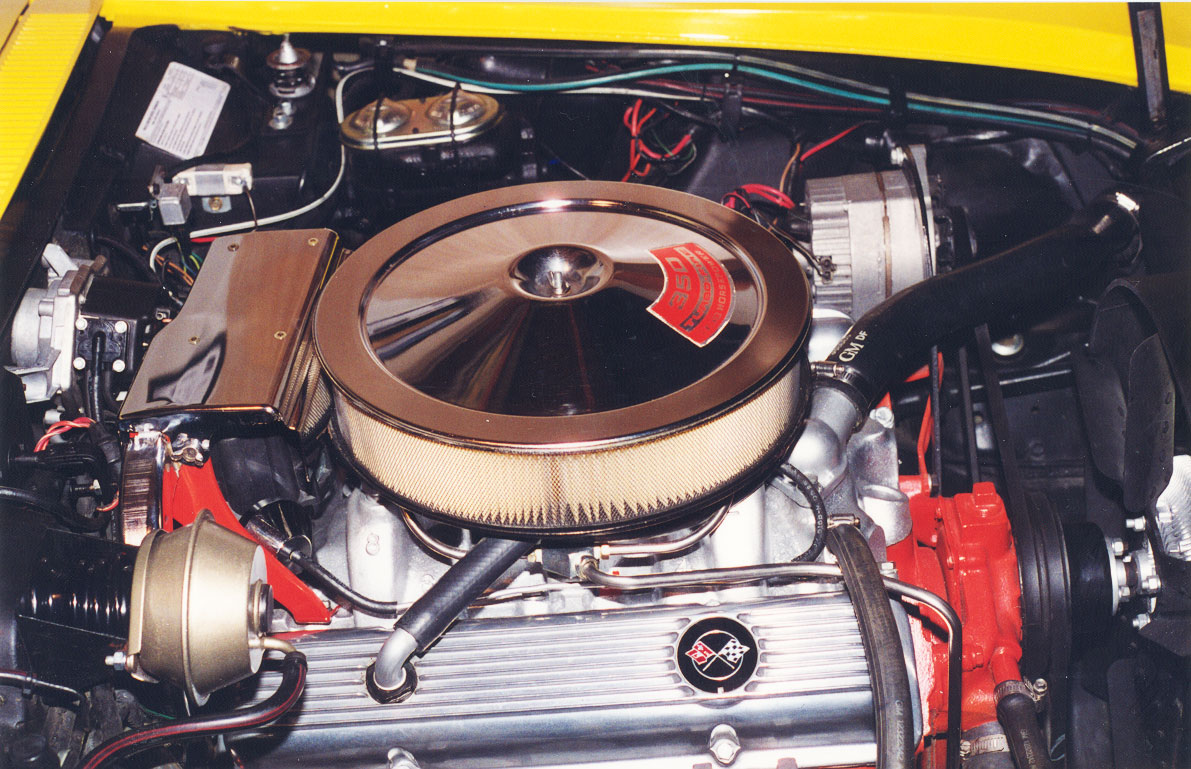That’s LT-1—with a hyphen.
There have been three incarnations of the LT-1/LT1 engine now, including the latest version for the 2014 Corvette, but the first LT-1 (the hyphen differentiates it from the more modern mills) has become a true legend among Bowtie enthusiasts. And for good reason. Debuting in the Corvette in 1970, it took Chevy’s popular 350 small block to levels not yet seen.
Available for the Corvette and Camaro Z/28, the original 1970 LT-1 was a true racing-inspired engine. Utilizing four-bolt main caps, it featured a stronger cylinder block than the Corvette’s standard 350 engine. It had forged aluminum pistons, a high-rise intake manifold, 780 cfm Holley carburetor, baffled oil pan for reduced windage, high-volume oil and fuel pumps, transistorized ignition system, and low-restriction exhaust (Corvette only). Its 11:1 compression ratio, solid lifters, larger-diameter valves, and a high-lift camshaft pushed the engine to as much as 370 horsepower and 380 ft.-lbs. of torque. The 1970 LT-1 dealt out nearly as much low-end torque as Chevrolet big block engines but weighed considerably less. That allowed it to propel the Corvette from 0-60 in less than six seconds!
The only unfortunate thing about the LT-1 was its timing.
The 1970s weren’t a particularly friendly time for—well, practically anything related to automotive performance. The 1970 LT-1 was the peak performance engine of the original LT-1 series. As with other engines of the day, stricter regulations and lower compression ratios caused a decline in performance, and the LT-1 was discontinued altogether following 1972. Only 1,287 LT-1 Corvettes left the factory in 1970, making the original LT-1 engine that much more rare—and the LT-1 Corvette that much more collectable.
The 350 was (and still is) the flagship of the entire small block Chevy line.
And the original LT-1 engine was the crown jewel of all 350s.


1970 Z28 LT1 was the strongest muscle car I had driven until I rode in a 1959 Corvette with a 375hp.327. That was another strong Chevy small block.
327 was the flagship of SBCs. 70 LT-1 was essentially a stroked L79 327 with a less aggressive cam.